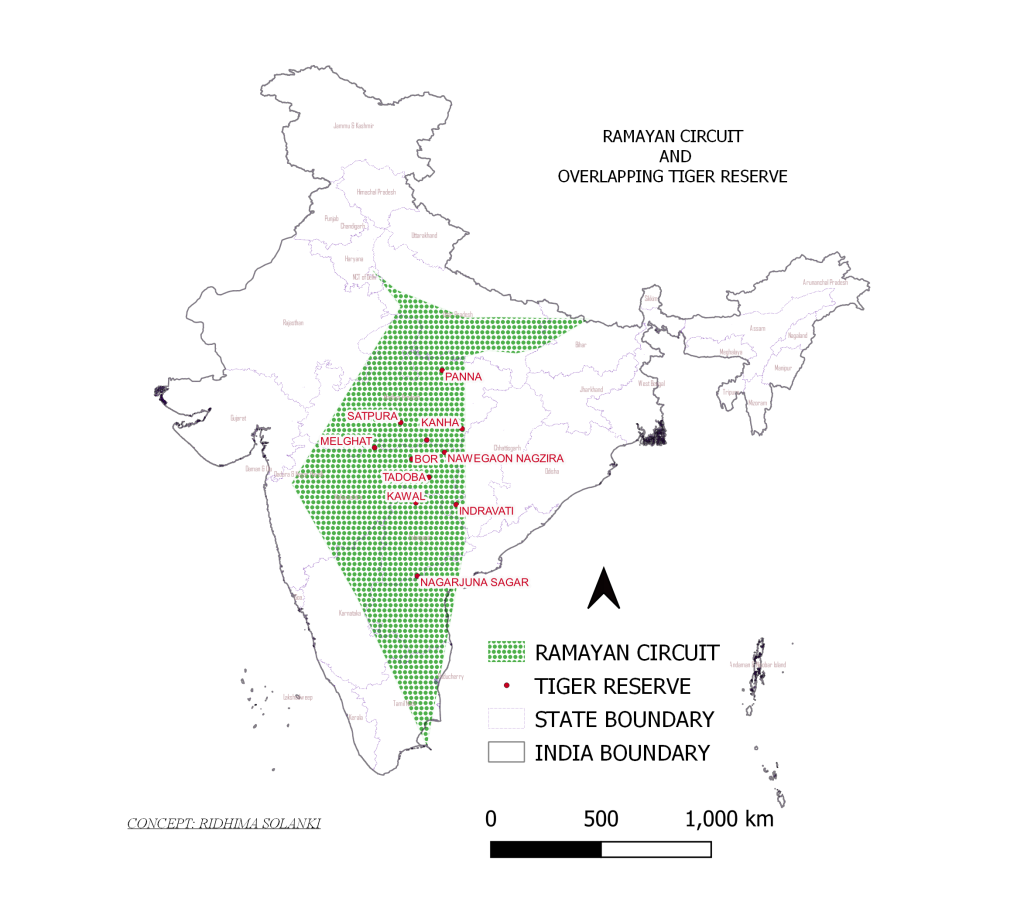Where tiger walked along with Sri Ram
In 2019, the Ministry of Tourism under the Swadesh Darshan scheme developed a thematic circuit – Ramayan Circuit which plans to trace the path taken by Hindu God Ram during his vanvasa. In the current era, the significant Hindu pilgrimage is included in this circuit. See the press release here .
However, like a typical wildlife and tiger lover, I wanted to see the overlap of this circuit with major tiger habitats. The ancient forests must have included much bigger habitats of tigers and other wildlife species. The central Indian landscape was an attraction to Rudyard Kipling to dive himself into conceiving the character of Mowgli. Naturalists like Dunbar Brander and J Forsyth gave us a record of the wildlife of this landscape. Central India included the southern boundary of the state of Uttar Pradesh too which had forests and tiger habitat in earlier times. However, currently, tiger habitat is majorly restricted to terai habitat in Uttar Pradesh.
Tiger reserves like Panna, Kanha, Melghat, Satpuda, Tadoba, and Indravati are some of the earliest tiger reserves which still hold pristine forests and significant archeological sites in the vicinity. Nagarjunasagar Srisailam presents beautiful and unique forests of Nallamalla hills where the tiger has been very smartly avoiding human eyes and enjoying the secluded valley.
The Ramayan circuit proffers the possibility that the Hindu God transversed these forests. As much amazing as the whole thought of God seeing the tigers and enjoying the beauties of ancient forests, it gives us an opportunity in the current time to go and revisit these forests. The tiger reserve not only presents you with the opportunity to see tigers but to actually understand the forests. It is said once you know a thing/person then only you take pain to save it as then you can relate to it. The central Indian forests majorly fall in the Ramayan circuit being exposed to many threats like rapid urbanization, linear infrastructure, drought, and other climatic vulnerability that are causing “fragmentation” of forests. Once you visit these tiger reserves, look around the floral beauty besides faunal. Maybe you will join our cause of “forest connectivity and conservation“. More on these tiger reserves in the next post.
